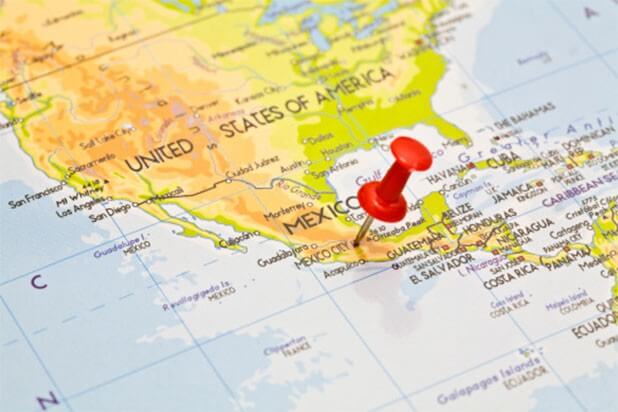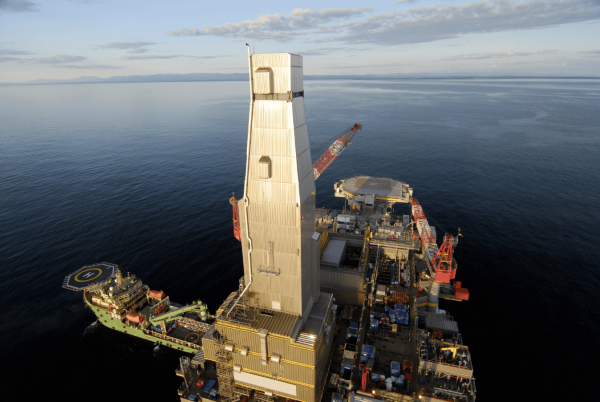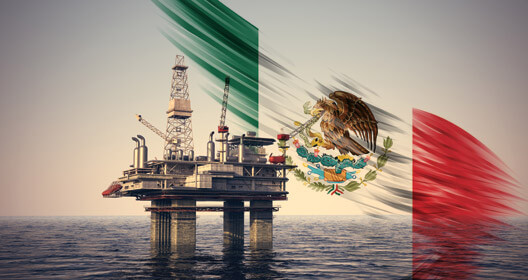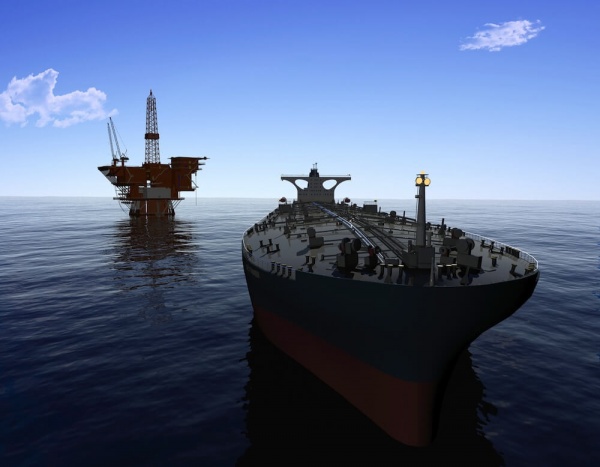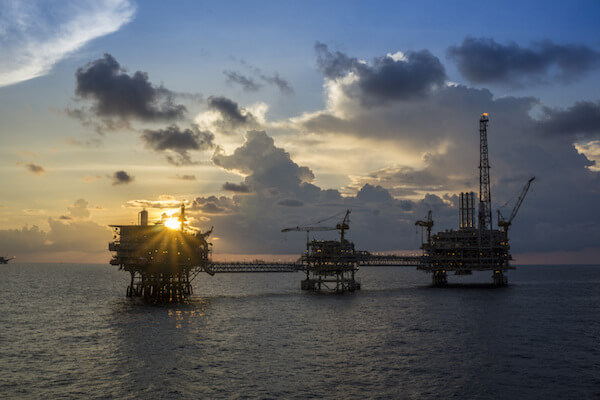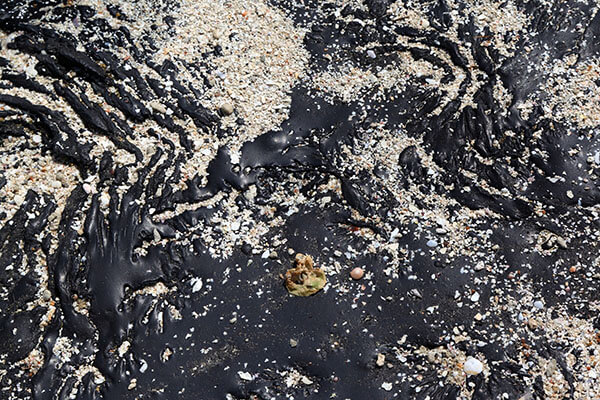Mexican Shallow Water E&P: On The Road Again?
/NewsToo much fanfare and accompanied by voluminous industry coverage, Mexico recently concluded Round 1.4, the country’s first ever deepwater licensing round. However, Mexico’s shallow waters may yet have a future too: Bay of Campeche reserves remain considerable and indeed, the country’s third shallow water bid round is ongoing. It is therefore worth reviewing the current state of shallow water E&P in Mexico.
Veering Off Course
Mexican offshore oil is currently produced entirely from shallow water fields, as has always been the case. The key sources of Mexican offshore oil have been several large field complexes such as Cantarell and Ku-Maloob-Zaap. As these fields and others came online, the country’s offshore oil output grew with a robust CAGR of 6.6% from 1980 to 2004, reaching a peak of 2.83m bpd in 2004. As the graph implies, four complexes accounted for 93% of this production. Decline set in thereafter at ageing fields (production at Cantarell began at the Akal field in 1979). Pemex – the sole operator of Mexican offshore fields prior to 2014 – tried to halt production decline, but with little success, given budget and technical constraints. Thus by 2013, offshore oil production at the four key field complexes had fallen to 1.31m bpd, accounting for 69% of Mexico’s offshore oil production of 1.90m bpd.
Getting Back On Track
This situation prompted President Peña Nieto’s government to initiate energy sector reforms in 2013, opening up the country’s upstream sector to foreign companies for the first time since 1938. Pemex was granted 83% of Mexican 2P reserves in “Round Zero” in 2014. The first shallow water round, Round 1.1, followed in December 2014. Only two of 14 blocks were awarded though, reportedly due to unfavourable fiscal terms inhibiting bidding by oil companies. The authorities then improved terms before launching Round 1.2 (shallow water), Round 1.3 (onshore) and Round 1.4 in 2015. Round 1.2 was better received than 1.1: as per the inset, 60% of blocks were awarded (75% of the km2 area on offer). One of the round’s victors, Eni, has already been granted permission to drill four appraisal wells on Block 1.
Turning Things Around?
In light of these positives, there are high hopes for Round 2.1, a shallow water round launched in July 2016. Indeed, 10 out of the 15 Round 2.1 blocks are in the prolific Sureste Basin, home to the Cantarell complex. Eight of these ten areas are unexplored, so there is sizeable upside potential, and have been mapped with 3D seismic, so operators could begin drilling promptly. Moreover, the surface area of the blocks in Round 2.1 are twice that of Round 1.1. It should also be noted that according to a 2016 IEA study, Mexico’s shallow waters still account for 29% of the country’s remaining technically recoverable oil resources. Finally, with rates for a high spec jack-up in the GoM assessed at about $85-90,000/day in January 2017, down 45% on three years ago, some oil companies might be tempted to make a move on a round that could offer a relatively low cost means to grow oil reserves and production.
So arguably, Mexican shallow water E&P is on the road again. There are potential hazards of course, such as oil price volatility or Mexico’s relationship with the US. But it is not implausible to think that Mexican shallow water oil production might speed up again in the coming years.
Clarkson Research Services Limited /Hellenic Shipping News
27/02/2017
Proposed border tax could harm U.S.-Mexico energy trade: official
/NewsA border tax floated by aides to U.S. President Donald Trump is “not a good idea” for bilateral energy trade, a senior Mexican official said on Wednesday, also confirming that Mexico’s second-ever deepwater oil auction would happen this year.
A 20 percent border tax on Mexican imports to the United States has been pitched by the Trump administration as one way to force Mexico to pay for a new border wall, a top campaign promise.
Separately, a so-called border adjustment tax has been proposed by the new administration and its Republican allies in Congress that in theory would tax imports but not exports.
Both proposed taxes face opposition from U.S. oil refiners and automakers, among other sectors, warning they would raise consumer prices.
“We don’t see this kind of a tax as a good idea,” said Aldo Flores, Mexico’s deputy energy minister for hydrocarbons.
“Our position continues to be that free trade and the free flow of these goods has benefited both countries, strengthening the energy security of both,” he said.
Relations between the United States and Mexico are especially tense as Trump has threatened to upend nearly a quarter century of free trade, deport millions of illegal immigrants and build his signature border wall while getting Mexico to pay it, something the Mexican government has said it will not do.
For decades, the two neighbors have nurtured a robust cross-border energy trade, with crude oil produced by state company Pemex sold to U.S. refiners, while American producers sell natural gas and fuels like gasoline and diesel to Mexican buyers.
Last year, the total value of U.S. energy exports to Mexico totaled $20.2 billion, while Mexico exported mostly crude oil worth $8.7 billion to the United States, in a reversal of the historic balance of energy trade between the two countries, according to U.S. Energy Information Administration data.
Similarly, Mexico’s crude shipments could be pressured if the United States approves the new Trump-backed permit for TransCanada’s (TRP.TO) proposed Keystone XL pipeline and the project brings new supplies of Canadian heavy crude to U.S. refineries.
“Supposing that (the pipeline) is completed, that changes the competitive playing field for Mexican crude,” said Flores, adding that producers of oil in Mexico would have to be more creative in how they market their output.
DEEPWATER AUCTION
Mexican and Canadian heavy crudes have competed for years for buyers among U.S. Gulf coast refineries.
While Mexico’s oil regulator is planning three new oil auctions later this year, covering shallow water and onshore fields, a new deepwater auction is also planned.
“It will be toward the end of the year,” said Flores, who also sits on the Pemex board and took over as deputy energy minister in August.
He declined to specify where the deepwater blocks would be located.
Flores added that a first-ever auction of shale oil and gas blocks would “probably” be scheduled, noting that necessary regulations would be published before the end of the year.
Last year, Mexico concluded four first-ever oil auctions, part of a landmark energy opening finalized in 2014 that ended Pemex’s decades-long monopoly, including a December deepwater auction that awarded 10 blocks to a wide range of international oil majors.
While Mexican crude output has declined over the past dozen years from a peak of 3.4 million barrels per day, Flores said he expected output to total 1.9 million to 2.0 million bpd in 2018, similar to a forecast of 1.94 million bpd for this year.
David Alire Garcia and Adriana Barrera / Reuters
Wed Feb 15, 2017 | 8:09pm EST
Mexico, NAFTA and energy on the same side
/NewsWhen it comes to NAFTA and energy, there is no doubt that Mexico gets the better end of the deal with a series of special carve outs for its national industry. The result has been an unbalanced, incongruous relationship between the United States, Mexico and Canada. In other words, when it comes to energy, NAFTA is anything but free trade .
Take the following examples from chapter six of NAFTA, addressing energy trade:
An American company is permitted to open a power plant in Mexico to generate power for Texas, but, according to the provisions carved out for Mexico’s nationalized energy industry, the power plant would have to sell all of its excess power to Mexico’s Federal Electricity Commission (CFE) at the rate negotiated by CFE. ( Annex 602.3(5) ) If a cogeneration plant is built in Mexico with the express purpose of providing power for a Canadian company’s factory in Mexico, then, according to NAFTA, it must sell any excess power to CFE. ( Annex 602.3(5)(b) ) In both cases, the American and Canadian operations face a disadvantage in price negotiations because they are required to sell excess power to CFE only.
When it comes to oil and gas exploration, NAFTA includes a provision requiring the three countries to maintain incentives to encourage companies to find new energy reserves. ( Article 608.1 ) However, in the special provisions, Mexico is exempted from incentivizing – or even permitting – private exploration and development. This special provision makes clear that “the Mexican State reserves to itself” all E&P, nuclear power, foreign trade, transportation, storage, distribution and electrical supply within its own borders. ( Annex 602.3(1) ). In the U.S. and Canada, free trade in energy exploration must be promoted. In Mexico, the government can do what it chooses .
Mexico is allowed to “restrict the granting of import and export licenses for the sole purpose of reserving foreign trade” in a variety of energy goods including (but not limited to): aviation fuel, gasoline, shale and tar sands, diesel oil, most forms of commercial gasses and kerosene. ( Annex 603.6 ). The U.S. and Canada must keep import and export licenses open.
These carve outs meant to favor Mexico’s national energy industries have not been kind to Mexico’s economy, energy supply or business development. Mexico has insisted one form or another of nationalized energy for almost a century . Basic tenants of capitalism explain that a closed, national energy regime prohibits competition, leading to misalignment of resources and prices. Absent a truly robust and well-managed system in Mexico, this is what happened.
In 2014, historically low levels of oil production, higher energy consumption and depleted oil reserves led Mexico amend its constitution to open Mexico’s state energy industries to foreign investment. These changes permitted the Mexican government to auction off certain oil and gas leases to foreign, private companies for development and to allow foreign companies to participate in owning pipelines, refineries, petrochemical plants and even electricity generation. Mexico also committed to bringing gasoline and natural gas prices in line with market prices rather than setting them artificially.
Although the process has not always been smooth – Mexico is experiencing gasoline shortages and spikes in gasoline prices, in part, as a result of these efforts – the overall trend towards liberalization in Mexico’s energy industry is promising. Many companies have bid for offshore leases to produce oil and gas in the Gulf of Mexico and the opportunities to invest in Mexican energy businesses are growing.
Since the Mexican state is no longer the only legal investor, owner, producer, buyer and seller of energy and energy products in Mexico, there is now a potential to renegotiate chapter six of NAFTA and eliminate the special provisions and carve outs for Mexico. This would not only help improve Mexico’s energy situation, but improve trade relations amongst the three North American trade partners.
Story by Ellen R. Wald, Ph.D. is a historian and scholar of the energy industry / Petroleumworld
02 17 2017
BHP Billiton ticks $2.8 billion Gulf oil deal
/NewsBHP Billiton has approved its share of the $US9 billion ($11.8bn) Mad Dog 2 offshore oil project in the US Gulf of Mexico, six weeks after operator BP ticked off on the project.
For BHP, its 23.9 per cent stake in the 140,000 barrels per day platform will set it back $US2.2bn ($2.8bn) and offset some of its declining oil production from 2021-22 when oil starts to flow.
“Mad Dog Phase 2 is one of the largest discovered and undeveloped resources in the Gulf of Mexico, one of BHP Billiton’s preferred conventional deepwater basins,” said BHP’s Houston-based petroleum president Steve Pastor.
“It offers an attractive investment opportunity for BHP Billiton and aligns with our strategic objective to build our conventional portfolio through the development of large, long-life, high-quality resources.”
BHP’s petroleum unit is focused on conventional oil after $US20bn of US shale acquisitions in 2011, and nearly as much spending since, have failed to deliver expected returns because of subsequent falls in oil and gas prices. Mad Dog 2 was originally expected to cost $US20bn but after going back to the drawing board three years ago, the joint venture, which also includes Chevron, has shaved more than 50 per cent off the costs.
According to Deutsche Bank estimates, the Mad Dog stake is worth $US866m of value for BHP, which is also expanding in the Mexican waters of the Gulf.
Shortly after BP approved Mad Dog, BHP beat BP in a $US1.2bn bid to partner Mexico’s national oil company, Pemex, in the Gulf, making it the first company to do so since the Mexican industry was nationalised in 1938.
The deal on the known 485 million-barrel Trion oil discovery, about 30km from Mexico’s sea border with the US, delivers BHP a near-term development opportunity in partnership with Pemex, which the Mexican government estimates could cost $US11bn.
First production at a daily rate of 120,000 barrels a day by 2022 would be possible by the joint venture — BHP (60 per cent operator) and Pemex (40 per cent).
Mexico undid Pemex’s oil industry monopoly in December 2013 under a reform agenda designed to bring in foreign capital and expertise to accelerate the pace of development, particularly for the backlog of projects in the deepwater oil fairways of the Gulf of Mexico. Macquarie estimates that Trion will cost $US11bn to develop. The bank forecasts that BHP’s petroleum production will slide from 132 million barrels of oil equivalent this financial year to 113.4 million in 2020-21. BHP is due to report first-half profits on February 21.
RBC is expecting BHP to log underlying net profit of $US3.11bn, up from $US514m a year earlier and its interim dividend to fall to US14c a share, down from US16c.
Copyright: The Australian
Value of U.S. Energy Trade with Mexico Doubles
/NewsEnergy trade between Mexico and the U.S. has historically been driven by Mexico’s sales of crude oil to the U.S. and by U.S. net exports of refined petroleum products to Mexico. The value balance has now tipped in favor of the U.S.
Through 2014, Mexico’s exports of crude oil were the most valuable component of bilateral energy trade, with the overall value of Mexico’s U.S. crude oil sales far exceeding the value of U.S. net sales of petroleum products, primarily gasoline and diesel fuel, to Mexico. From 2006 through 2010, for example, the value of U.S. energy imports from Mexico was two to three times greater than the value of U.S. energy exports to Mexico.
However, the bilateral energy trade situation with Mexico has changed significantly in recent years. In 2015 and 2016, the value of U.S. energy exports to Mexico, including rapidly growing volumes of both petroleum products and natural gas, exceeded the value of U.S. energy imports from Mexico as volumes of Mexican crude oil sold in the U.S. continued to decline. For 2016, the value of U.S. energy exports to Mexico was $20.2 billion, while the value of U.S. energy imports from that country was $8.7 billion.
Import and export values each reflect commodity volumes and their prices. Monthly trends in volumes through 2016 showed increasing U.S. petroleum product and natural gas exports to Mexico, with a generally declining trend in U.S. crude oil imports from Mexico.
Mexico is second only to Canada in energy trade with the U.S. Based on the latest annual data from the U.S. Census Bureau, energy accounted for about nine percent of all U.S. exports to Mexico and three percent of all U.S. imports from Mexico in 2016.
Crude oil makes up most of the energy imports from Mexico, averaging 688,000 barrels per day (b/d) in 2015 and 588,000 b/d in the first 11 months of 2016. In 2015, Mexico was the source of nine percent of crude oil imported by the U.S., providing the fourth-largest share behind Canada, Saudi Arabia and Venezuela.
From 2006 through 2014, U.S. crude oil imports from Mexico were valued at an annual average of about $30 billion, but more recently, as both the volume of crude oil imports from Mexico and world oil prices declined, U.S. crude oil imports from Mexico were valued at $12.5 billion in 2015 and $7.6 billion in 2016.
Mexico’s total crude oil exports have been declining as its oil production falls. Because Mexico has been sending more oil to countries in Europe and Asia, crude oil exports to the U.S. have been declining more rapidly than overall crude oil exports.
Petroleum products account for most of the value of energy exports from the U.S. to Mexico. In 2015, Mexico was the destination for 690,000 b/d of petroleum products, or 16 percent of all petroleum products exported from the U.S. These exports were valued at more than $16 billion. In 2015, even though the U.S. exported more petroleum products to Mexico than in 2014, the value of those products was lower because of lower prices for fuels such as gasoline, distillate fuel oil and liquefied petroleum gases.
In the first 11 months of 2016, petroleum product exports rose in both volume (averaging 849,000 b/d) and value relative to the first 11 months of 2015. Changes in Mexico’s utilization of petroleum refineries have created a widening gap between its domestic supply and demand, and U.S. gasoline exports now make up more than half of Mexico’s gasoline consumption. Compared with petroleum product exports, 2016 petroleum product imports from Mexico to the U.S. were relatively small, accounting for about 87,000 b/d and valued at $0.9 billion through November.
Bilateral natural gas trade is dominated by pipeline shipments between the United States and Mexico. U.S. natural gas exports to Mexico totaled nearly 2.9 billion cubic feet per day (Bcf/d) in 2015, or almost 60 percent of all U.S. natural gas exports, and are growing rapidly.
Based on data through November, U.S. natural gas exports to Mexico averaged 3.8 Bcf/d in 2016, and reports indicate that daily flows during early 2017 are already exceeding 4.2 Bcf/d.
In 2017 and 2018, natural gas pipelines currently under construction or in the planning stages are expected to nearly double the pipeline natural gas exporting capacity from the U.S. to Mexico. Much of this natural gas will likely be used to generate electricity, as Mexico’s energy ministry expects to add significant natural gas-fired electricity generating capacity through 2029.
Copyright: The Maritime Executive
Saudi Aramco Hires Banks for First Bond Sale Ahead of IPO
/NewsSaudi Arabian Oil Co. picked four banks to advise on its first bond sale, two people familiar with the matter said, ahead of plans for the world’s largest initial public offering.
Saudi Aramco, as the company is known, selected HSBC Holdings Plc’s local unit and Riyad Capital to help with the sale of riyal-denominated Islamic bonds, or sukuk, before the end of June, said the people, asking not to be identified as the information is private.
NCB Capital Co. and Alinma Investment Co. are also working on the deal that could be followed by dollar-denominated bonds, two other people said. The sukuk is part of Aramco’s plans to raise as much as $10 billion in bonds this year, one of the people said. Aramco and HSBC Saudi Arabia declined to comment, while Riyad Capital, NCB Capital and Alinma Investment didn’t respond to requests for comment.
Aramco, the world’s largest oil producer, is preparing to sell bonds ahead of an IPO in 2018. The Saudi Arabian government’s debut offering in October raised $17.5 billion in the biggest-ever emerging-market sale. Middle East and North African countries sold almost $80 billion of bonds last year, the most since Bloomberg started compiling data in 1999.
Although Aramco hasn’t sold bonds before, two of its units have. Sadara Chemical Co., a joint venture between Aramco and Dow Chemical Co., raised 7.5 billion riyals ($2 billion) in 2013, while the company’s joint venture with Total SA sold 3.75 billion riyals of sukuk in 2011.
Saudi Arabia plans to sell less than 5 percent of Aramco as part of plans by Deputy Crown Prince Mohammed bin Salman to set up the world’s biggest sovereign wealth fund and reduce the economy’s reliance on hydrocarbons. With the government valuing Aramco at $2 trillion, its estimated IPO size would make it the largest ever, dwarfing the $25 billion raised by Chinese Internet retailer Alibaba Group Holding Ltd. in 2014.
Aramco asked banks including Goldman Sachs Group Inc. and HSBC to pitch for an advisory role on the IPO last month, people said at the time.
Copyright: Bloomberg
Oil spill near Exxon Mobil drilling platform is Bass Strait to be investigated
/NewsAn oil spill at an Exxon Mobil platform in the Bass Strait is being investigated by the federal regulator, after the discovery of an oily sheen on waters around the rig.
The spill comes less than 18 months after a fire raged on the same platform for nine hours before it could be controlled. And in 2013, Exxon was responsible for a spill from another rig in the Bass Strait.
Environmentalists have said the spill is a reminder of the inherent dangers of offshore oil drilling, and called for planned oil drilling in the Great Australian Bight to be stopped.
North Sea or Great Australian Bight, oil drilling is always a risky business
On Thursday, the National Offshore Petroleum Safety and Environmental Management Authority (Nopsema) posted an alert saying Esso, a company owned by ExxonMobil, had informed it of an oil sheen alongside its West Tuna platform in the Bass Strait the previous day.
The platform is 45km off the Gippsland coast in Victoria. The cause of the spill, and how much oil contaminated the water, was not yet known.
A spokesman for ExxonMobil said it was still investigating the cause of the spill.
“On Wednesday, 1 February an oil sheen was observed on the water near the West Tuna platform in the Bass Strait,” he said. “Esso responded immediately and continues to investigate potential sources of the sheen observed on 1 February.
“The Tuna to West Tuna pipeline, which is the pipeline nearest to the observed sheen, was shut-in at the time of original observation due to planned maintenance on West Tuna platform and remains shut in and not in operation.”
The Greenpeace oceans campaigner, Nathaniel Pelle, said: “Offshore oil drilling is risky business for our oceans and fisheries industries, as this latest oil spill near one of Australia’s largest fisheries shows.
“This spill in the Bass Strait should send a clear ‘wrong-way-go-back’ signal to the federal government, which is set to consider exploratory oil drilling by Chevron in the Great Australian Bight – a nursery for southern right whale calves.”
In September 2015 an electrical fire raged for nine hours on the same rig. It caused all the lights on the platform to go out, forcing an evacuation to occur at night without lights.
In 2013, another ExxonMobil rig in the Bass Strait spilled about 750 litres of oil into the water.
The Exxon spokesperson defended the company’s safety procedures.
“Our platforms and pipelines are operated in accordance with ExxonMobil’s operations integrity management system, together with regulator approved safety cases and environmental plan which are systems to ensure the safety and health of personnel, maintain facilities integrity, and protect the environment,” he said.
Copyright: The Guardian

Latest News
 Breaking Barriers and Building the Future18 March, 2025
Breaking Barriers and Building the Future18 March, 2025 Fundamental factors to strengthen Pemex12 August, 2019
Fundamental factors to strengthen Pemex12 August, 2019 Offshore Project Development: The Road to First Oil26 July, 2019
Offshore Project Development: The Road to First Oil26 July, 2019
